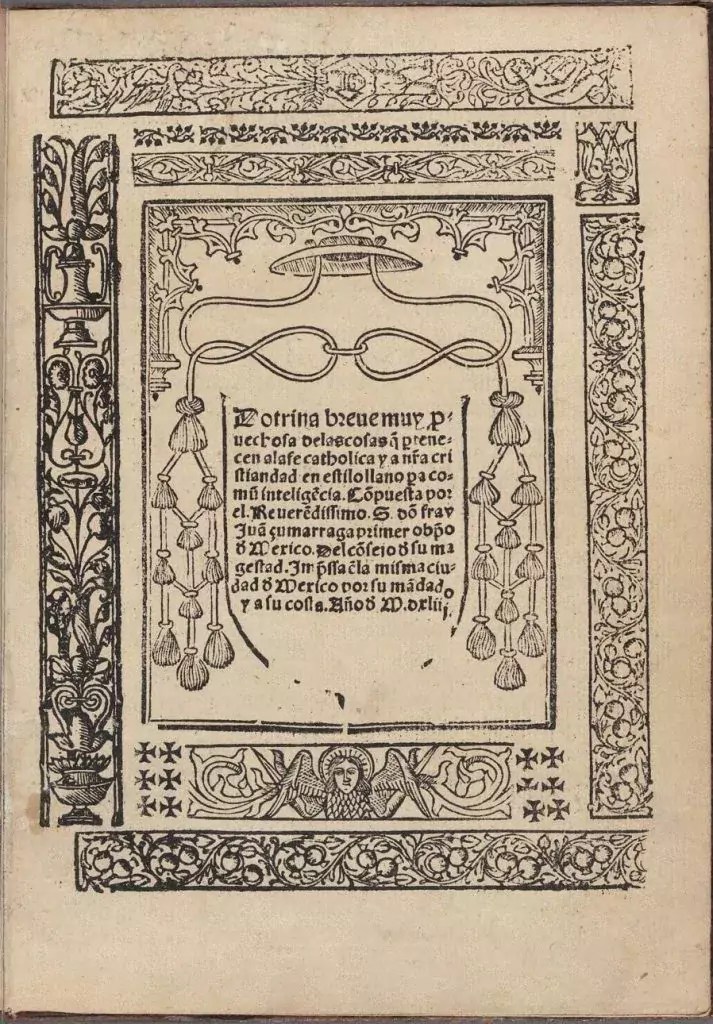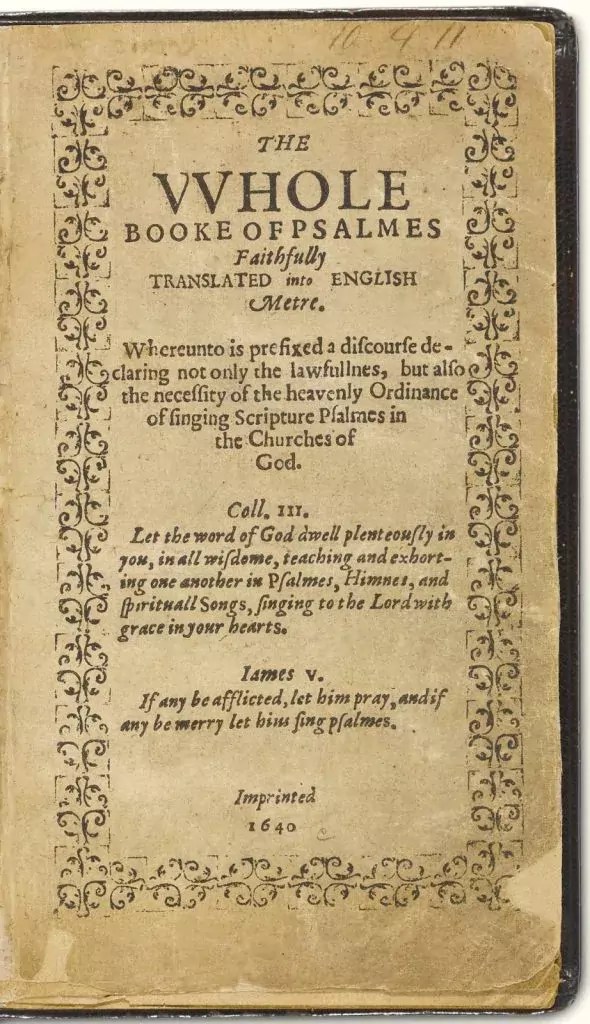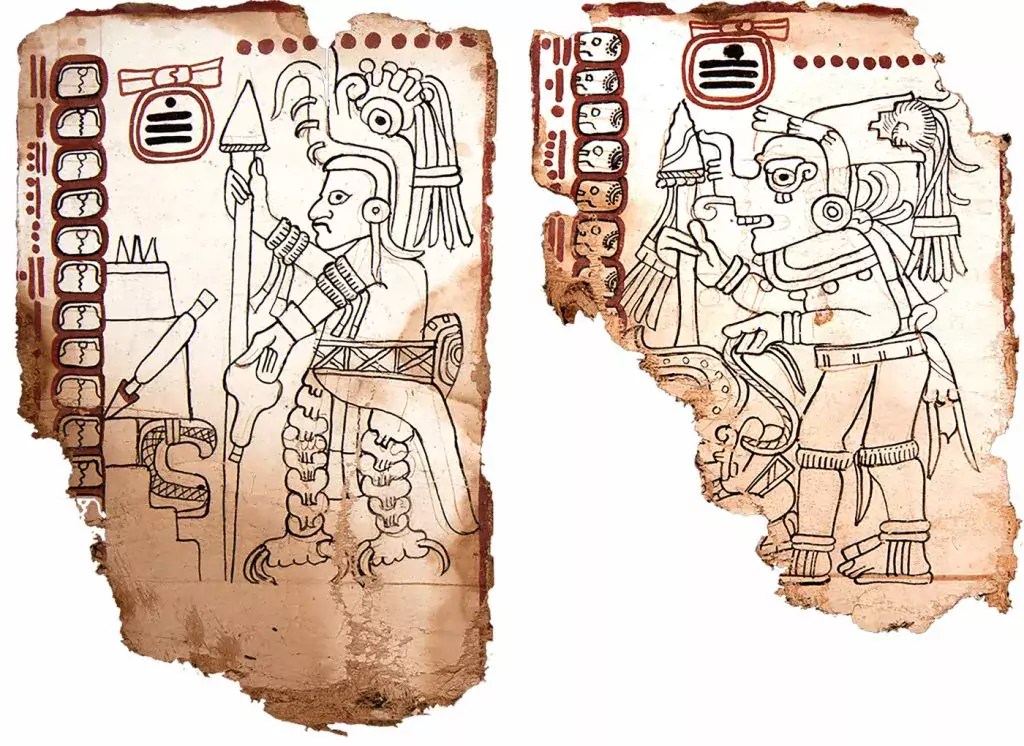
Printing was introduced into the Americas by the Italian Juan Pablos. In 1539, from his printshop in Mexico City, he printed Doctrina breve, a Spanish handbook of Christian doctrine. It was the Western Hemisphere’s first printed book.
Almost a century passed before a book was printed in North America. In 1640, in Cambridge Massachusetts, Stephen Daye, printed a translation of the Psalms, now known as the Bay Psalm Book.


American Books Before Print
The above books are the first typographic or printed books in the Americas, but how about books before print? To discover the very first book of any kind made in the Americas, we must travel farther south and back in time to the twelfth century, during a time that archaeologists call the Early Postclassic period (AD 900–1200) in Mesoamerica.
Discovered in the 1960s in Southwest Mexico, the earliest surviving book in the Americas was first exhibited at the Grolier Club in Manhattan, in 1971. Recent analysis shows that it was composed between 1021 and 1152, thus making it the oldest surviving book in the Americas.

Now known as the Maya Codex of Mexico, this 11-page manuscript, on amate or bark paper, charts the course of Venus. For the ancient Mesoamericans, Venus, the brightest object in the night sky, was also considered the most dangerous. Therefore, they considered it crucial that its movements be tracked.
So, the next time you see Venus, remember that it inspired the earliest surviving book in Mesoamerica.1
- A version of this article first appeared on the ILT blog. ↩︎